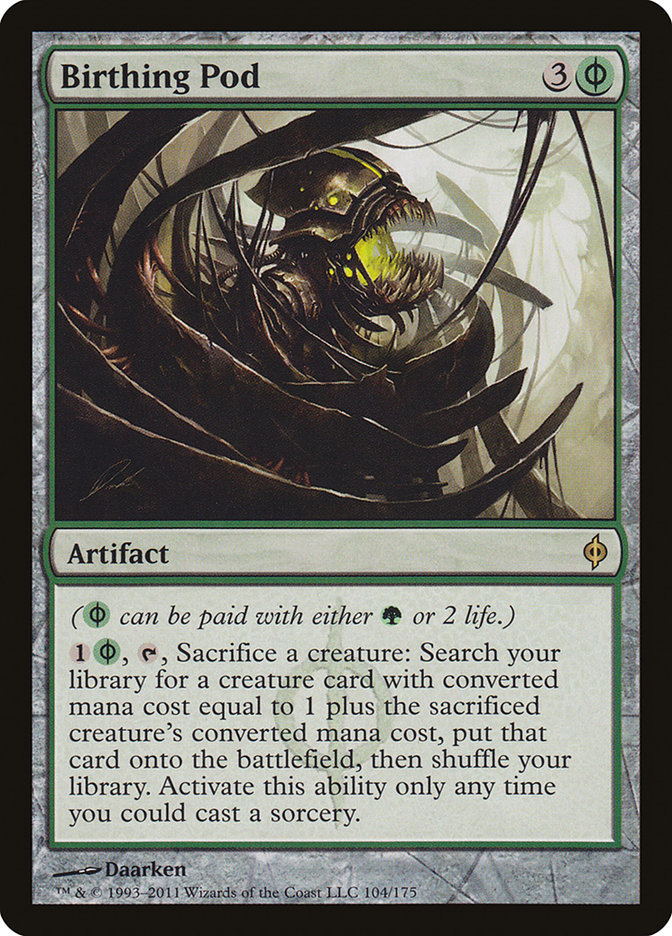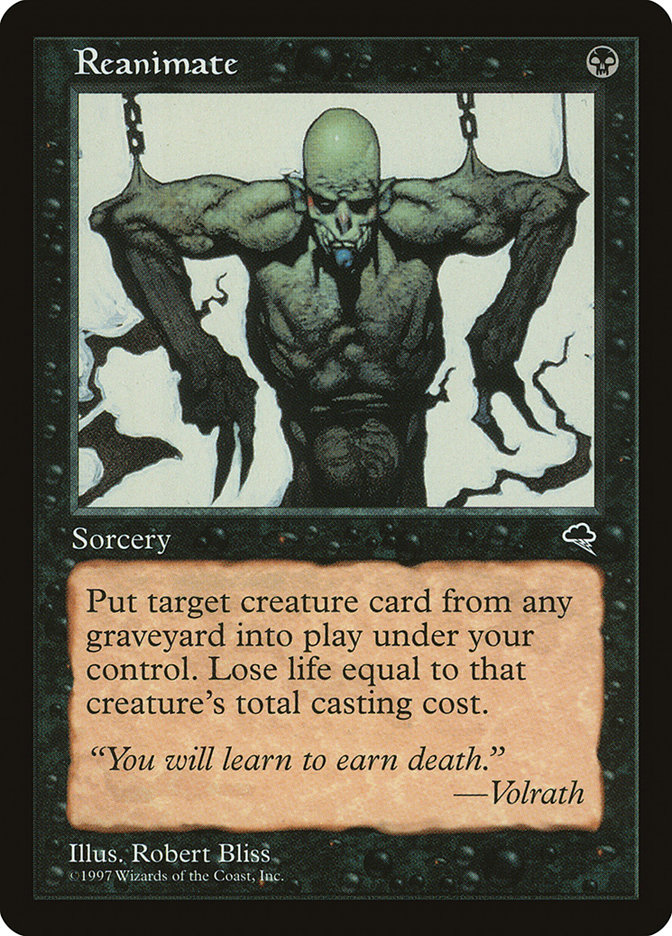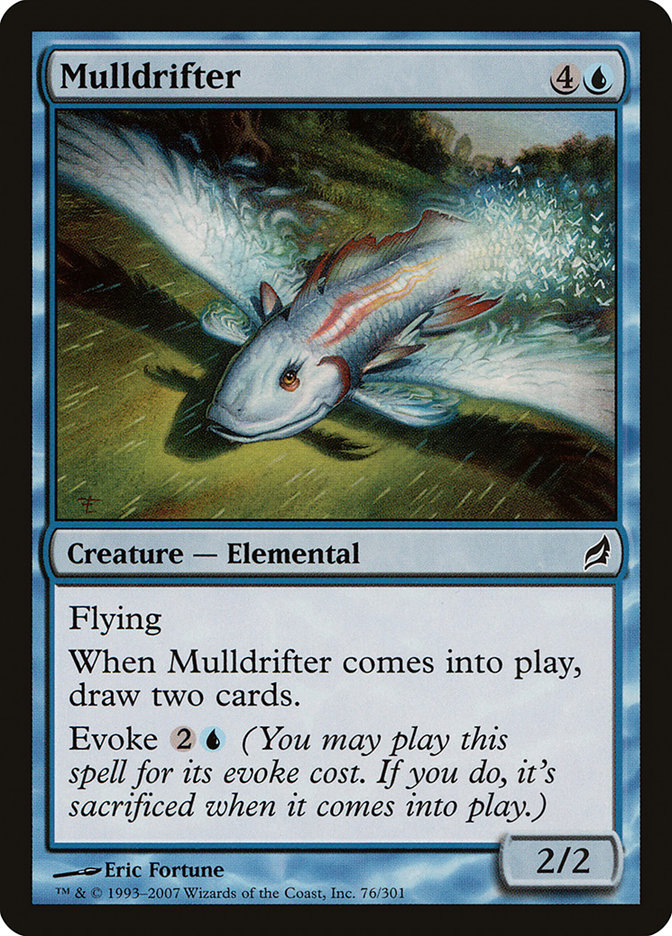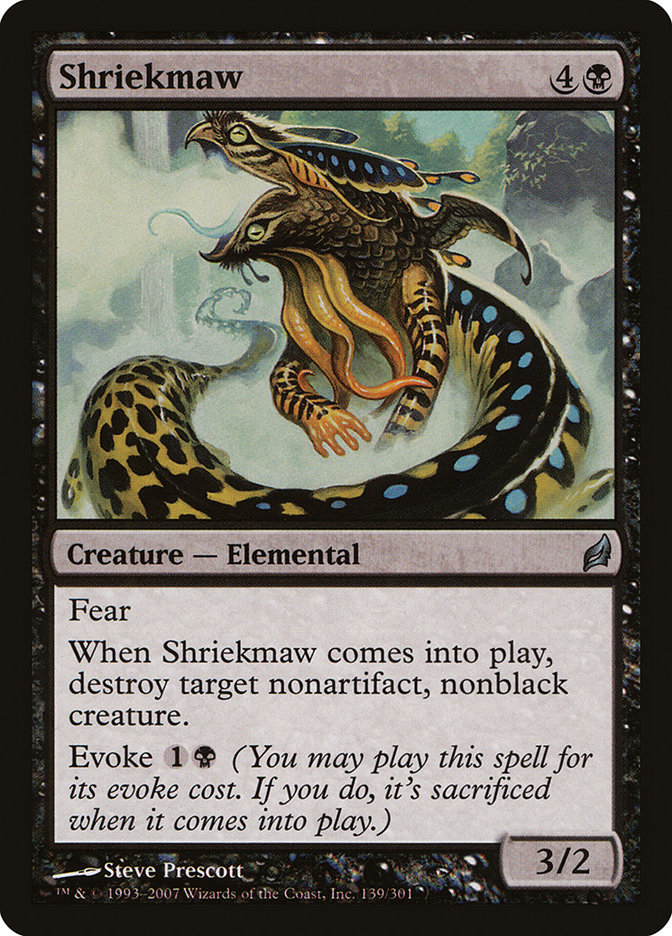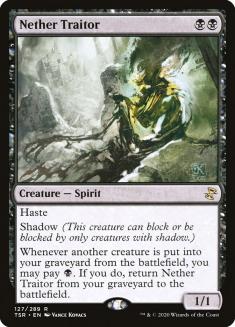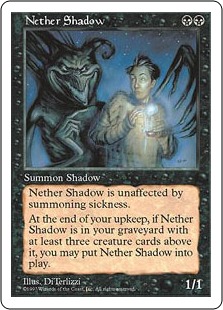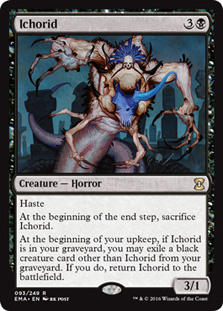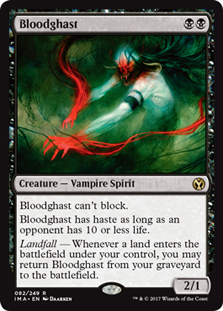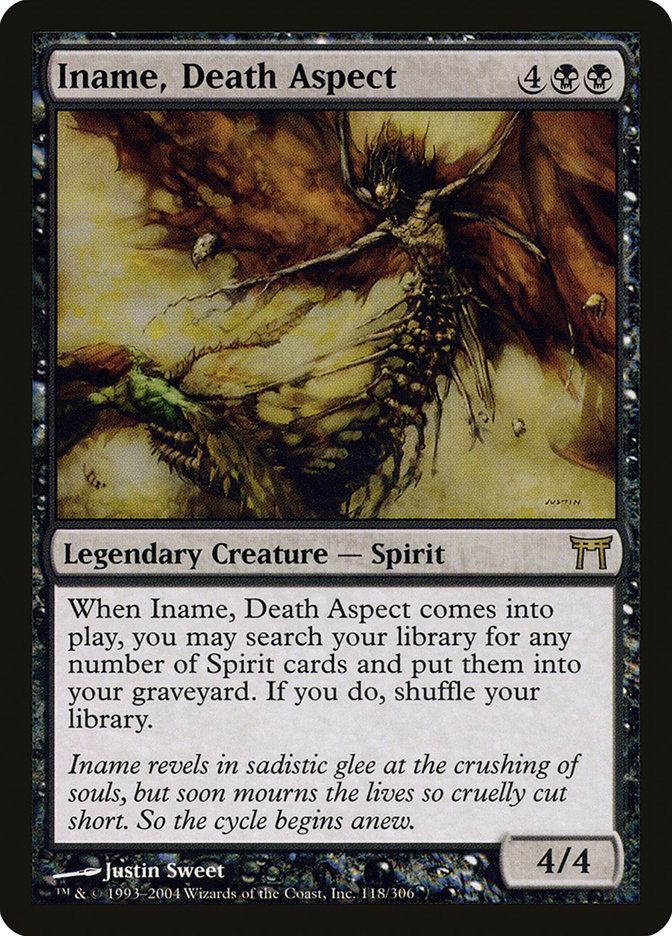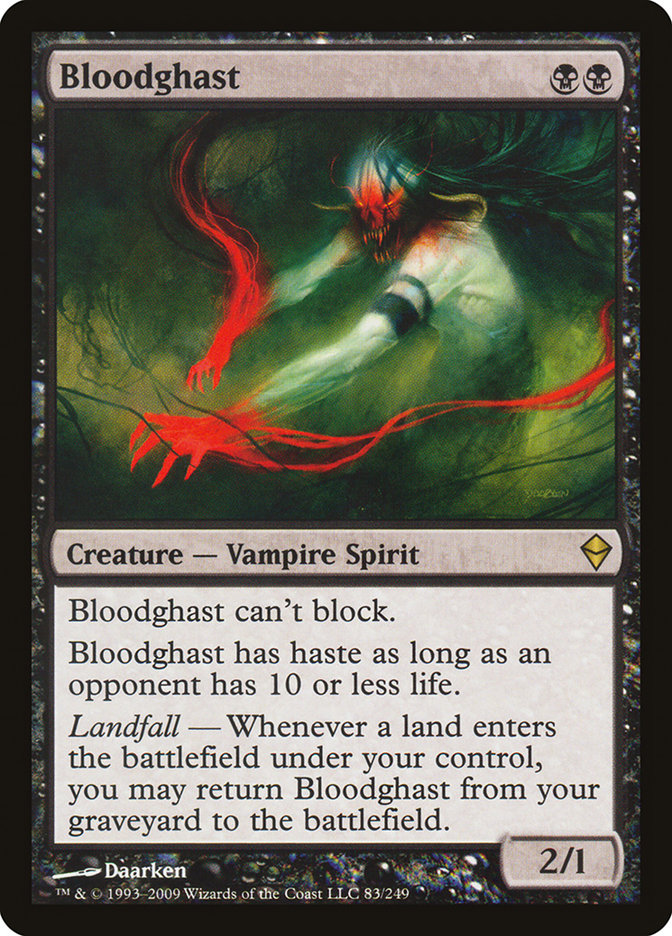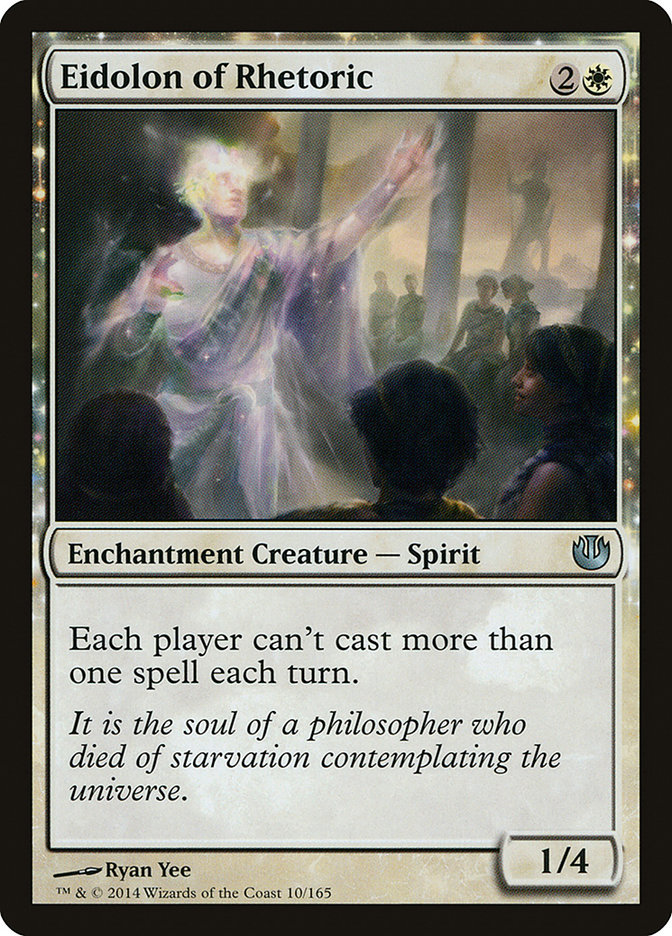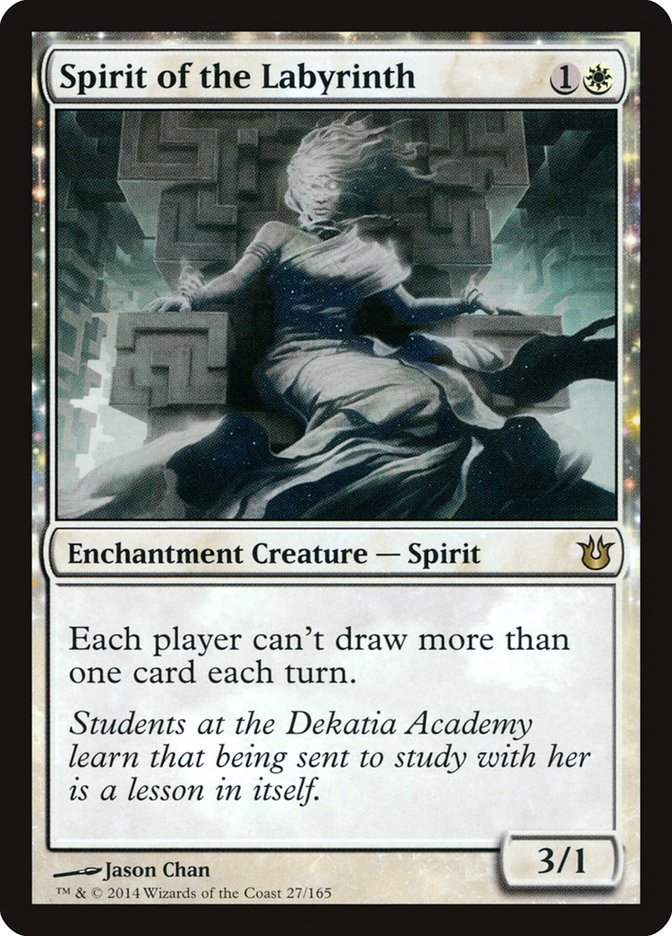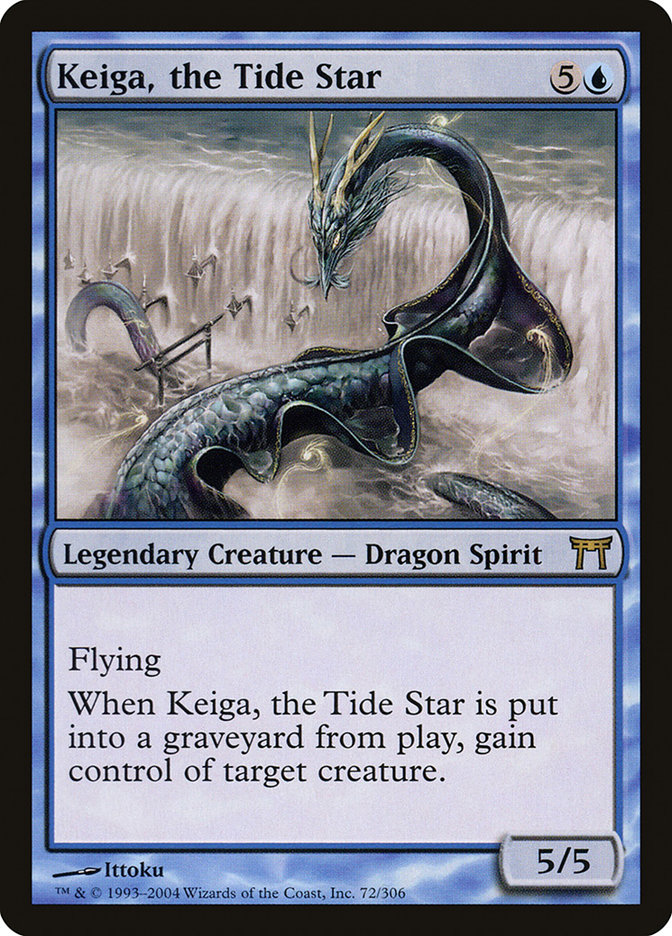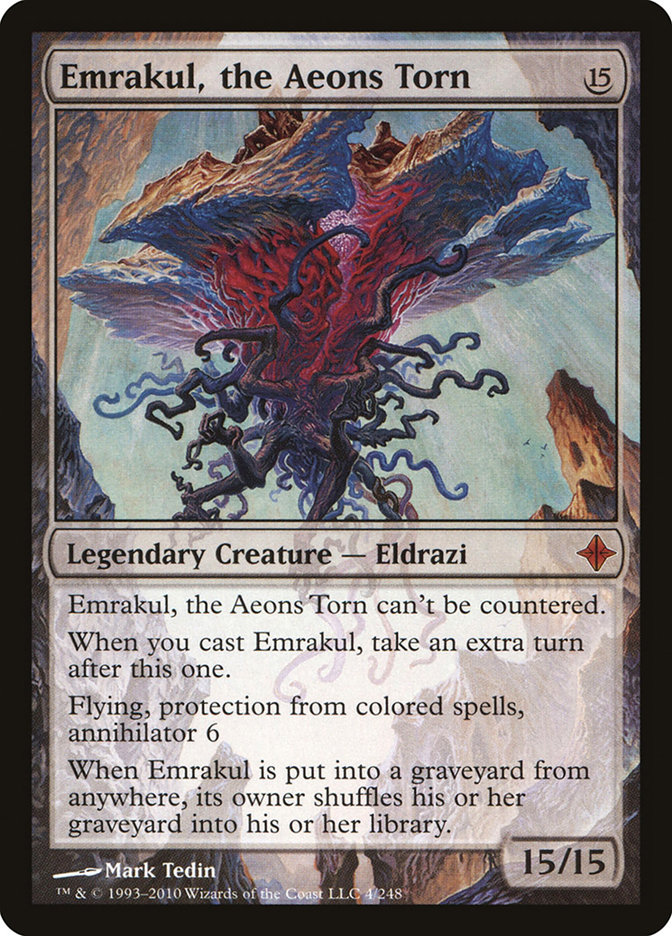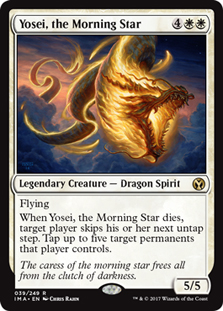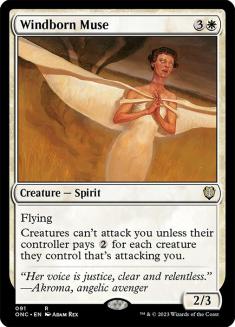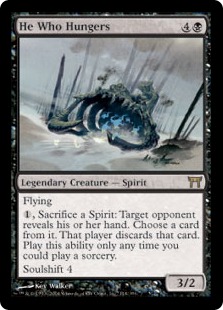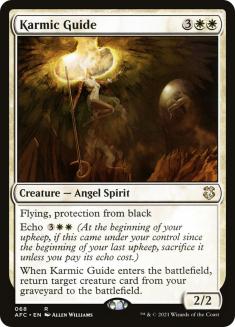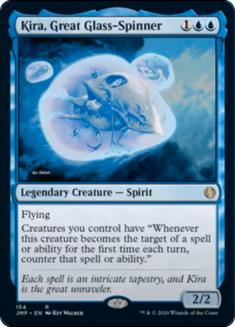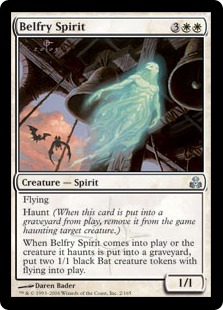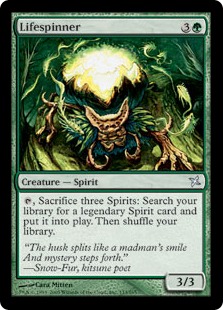I love Cube.
Many people love Cube because they get to eighth-pick Tangle Wire or Winter Orb or Armageddon and build their deck around denying their opponent the
opportunity to play Magic.
Other people love Cube because they get to play Jace, the Mind Sculptor next to Treachery and Miscalculation and just Be A Blue Control Player in the very
old-school sense of the word.
I love Cube for a very specific reason. I love when awesome s##t happens.
That’s why I loved seeing this poll result:
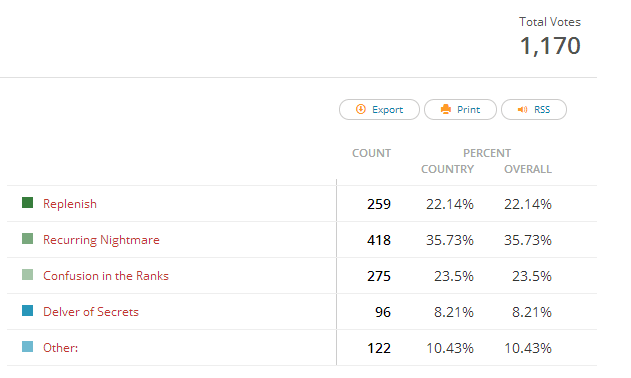
First off, you all clearly love the poll function, which is excellent. I’ll keep using that to find out what you want to see the most.
More importantly, though, Recurring Nightmare! You all love when sweet things happen too!
This article will be an attempt to go as deep as possible with Recurring Nightmare. Let’s start by examining what we’re working with:
When I look at Recurring Nightmare, I think of two cards: Birthing Pod and Reanimate.
At a glance, this is a far less powerful card than Reanimate. It costs three times as much and requires you to have a creature in play to sacrifice. In
exchange for the additional two mana and a creature, you get to save some life.
On the upside, it also has Buyback for the low, low cost of absolutely nothing.
That means that what we don’t want to do is build our deck around using it only once. If we just wanted to cheat a Griselbrand into play, we
should be Entombing and Reanimating–a legitimate strategy, but one not particularly well-suited to the card of the week.
In that sense, Recurring Nightmare is like Birthing Pod–it wants to play with creatures that like to move from graveyard to battlefield and back again.
Unlike Birthing Pod, however, there’s no mana constraint on what you’re bringing back–you can sacrifice a two-drop to bring back a six-drop. That’s a big
deal.
Unfortunately for Recurring Nightmare, it can’t tutor cards straight out of your deck. They have to find their way to the graveyard in the first place. In
Cube, the easy way to achieve this is with Lorwyn’s Evoke creatures:
When you want a creature in play, you get a creature in play. When you want a creature in the graveyard, you get a creature in the graveyard. Since
Recurring Nightmare asks us for balance–you can’t execute the ability without one of each–the Evoke creatures fulfill whatever need you have at the
time.
That’s Cube, though. We can almost certainly do better that Mulldrifter and Shriekmaw in Legacy. Let’s dive in a bit–if we’re sacrificing creatures over
and over, is there a way to just sacrifice the same creature every time?
Manaless Dredge already did a lot of our research for us about “creatures that come back over and over for zero mana.” Since we’re most assuredly playing
lands in this deck, though, we can also use cards like Nether Traitor and, more to the point, Bloodghast.
Bloodghast is the best of the DI Rebuy Club in this deck, since we’re angling for a longer game. We can keep some fetchlands around and ensure that our
flood means an endless supply of 2/1 beaters that can die at a moment’s notice.
Once we have Bloodghasts slotted in, we’re clearly interested in Cabal Therapy. If you don’t believe me, ask Sam Black–he only made Top 8 of a Legacy
Grand Prix with Cabal Therapy + Bloodghast:
Creatures (18)
Lands (20)
Spells (22)
- 3 Goblin Bombardment
- 4 Cabal Therapy
- 4 Thoughtseize
- 2 Bitterblossom
- 4 Faithless Looting
- 4 Lingering Souls
- 1 Tragic Slip
Sideboard

If our goal is to play a bunch of fetchlands and Cabal Therapy, having at least one Dryad Arbor isn’t a bad idea–it mitigates flooding and flashes back
Cabal Therapy in the absence of Bloodghast.
Once we’re both green and black and have a bunch of fetchlands, it seems pretty silly to not play Deathrite Shaman. Once we know that we’re going to be
sacrificing creatures and playing for the long game, it seems pretty silly to not play Veteran Explorer. And so, from there, we already have a core of the
deck:
I have no idea if we want a third color and, if we do, what it should be, but I’m fine slotting in some black and green fetchlands regardless. If we end up
playing white, that’s cool. If not, that’s fine too. We’re just sketching things out for the moment.
The real question is how we stock our graveyard. It’s all well and good to Careful Study or Faithless Looting away a Bloodghast and a Cabal Therapy, but
that’s not really furthering our goal of “destroy them with Recurring Nightmare.” We need an Entomb that does so much more than an Entomb. We need…
This.
I’ll save you some time: there are 394 non-Changeling cards with the subtype Spirit in Magic: the Gathering. You might have noticed something about
Bloodghast:
Yep, that’s a Spirit. Already, an Iname trigger finds all four of our Bloodghasts.
What else can we find? How about answers to combo decks? Any Spirits to be found there?
Look, I know I didn’t mention Eidolon of Rhetoric in my set review of Journey into Nyx, but that’s because I didn’t know that I’d be making a Spirit-themed
Recurring Nightmare deck a few weeks later. In most other situations, the card isn’t going to be better than Ethersworn Canonist–it costs one more, it
attacks for less, it still dies to Abrupt Decay, it dies to Reverent Silence, and so on. In this case, however, its existence as a Spirit shines brighter
than Robot Rule of Law.
Any other combo haters?
Yeah, that’ll do. Get on the bus–I’m sure we’ll want a Spirit of the Labyrinth at some point.
…wait, excuse me? What do you do?
….
Oh.
So you’re telling me that if someone Sneak Attacks an Emrakul, the Aeons Torn and attacks us…
…and we sacrifice Keiga, the Tide Star to the Annihilator trigger…
…we get to keep the Emrakul…
…forever?
That seems pretty sweet. How does that work, exactly?
*~*~ JUDGE INTERLUDE *~*~
Sneak Attack (and Through the Breach) set up a delayed trigger. That trigger is tied to the controller of the Sneak Attack effect, not the creature itself.
Note the language:
“You may put a creature card from your hand onto the battlefield. That creature gains haste. Sacrifice the creature at the beginning of the next end step.”
It’s not “the creature gains ‘sacrifice this at the beginning of the next end step.'” It’s “sacrifice the creature.” That distinction is hugely meaningful,
because the game tells the owner of the Sneak Attack trigger to sacrifice that creature. Assuming that it’s hanging out on the other side of the board at
that particular moment, that’s not possible because you can’t sacrifice something you don’t control. As a result, Emrakul misses its date with the
guillotine and lives happily ever after with its new owner.
Presumably, “lives happily ever after” means “untaps and immediately attacks for fifteen, annihilating the Sneak Attack player’s board in the process.” I
would certainly call that living happily ever after.
*~*~ JUDGE INTERLUDE OVER *~*~
What other Spirits can we play with Iname, Death Aspect?
In short, we have options. We’d like to strike a decent balance between “awesome to Recur” and “can reasonably cast in a game without Recur,” so let’s keep
that in mind as we prepare to go nuts.
Let’s start by identifying our silver bullets–the cards that we’re always going to want to bury with Iname, Death Aspect and bring back first in a given
matchup:
Eidolon of Rhetoric against Storm.
Spirit of the Labyrinth against non-Emrakul Griselbrand decks and Elves.
Windborn Muse against Dredge and Empty the Warrens.
He Who Hungers against any slow deck that’s vulnerable to hand disruption. If you can stick He Who Hungers and immediately sacrifice a Bloodghast, that
might be better than sticking a hate bear.
Kagemaro, First to Suffer against Elves, Death and Taxes, and other swarm-style decks.
Unfortunately, there’s no Spirit Ghitu Slinger. I really want something that just comes into play and kills off Deathrite Shaman on the cheap, but we’ll
probably have to play four of a broad removal spell to deal with Deathrite Shaman in its absence, since we are basically ice cold to an active Shaman.
So where are we with our list now?
4 Entomb
I’m not sure how many Kamigawa dragons we want, but I’m very sure that the way I want to end games is with Yosei lockdown. For that reason, I’m interested
in playing a lot of them. Keiga, the Tide Star also isn’t a bad draw, so I’m interested in having more than one copy of that. I’m very open to changing
things up as games play out, though, so don’t take these numbers to be anything more than a first draft.
Iname, Death Aspect is the definition of a one-of: we’re playing Entomb, it’s a powerful effect that has zero marginal value (the second Iname is
absolutely worthless), and it costs a lot. Even though it’s the centerpiece of the deck, having two isn’t how we want to spend spell slots here.
We’re looking at 35 spells with this iteration of the deck. I think the last four slots need to be either Abrupt Decay or Swords to Plowshares to deal with
Deathrite Shaman, since our game plan against Deathrite involves hardcasting six-drops and hoping that they go the distance.
Another possibility involves cutting the four most hateful cards (the one-ofs that aren’t Kagemaro, most likely), playing another engine-type card (I would
start with Sensei’s Divining Top, although Gitaxian Probe isn’t bad either), and sideboarding the one-of Spirit haters. I don’t want to do that both
because I like sucker-punching combo decks in game one situations and because variety is the spice of life. Realistically, though, I’ll probably try it.
For that reason, I’m inclined to keep things as they are, add a removal spell, and start building our manabase. Let’s slot in Swords to Plowshares for now.
This is not our first rodeo building Veteran Explorer manabases, nor will it be our last. Some general rules:
• Play enough basics for all of your corner cases. Any decent Veteran Explorer deck triggers the card in a ton of different game states, and you don’t want
to bemoan the absence of an Island with Keiga in hand.
• Play at least five, preferable six or seven basics.
• Question the inclusion of every single dual land. Figure out when you’re going to want to fetch it and what it’s going to cast.
• Include a Phyrexian Tower.
• Your manabase is for making mana–make sure it’s good at that before you try to make it do something else. Dryad Arbor is a perfect example of excess;
sure, you can squeeze value out of your manabase, but what happens when you have Veteran Explorer, Cabal Therapy, and two lands, but one of them is Dryad
Arbor? Do you just hope that the other one is a fetchland or Bayou? Why not play a fetchland or Bayou in the Dryad Arbor slot? Are you really that hard up
on creatures? Dryad Arbor has a very real cost.
Let’s get started. First things first: we know we’re playing 39 spells, so that makes 21 lands. Of those lands, we know that we want six basics (or more,
but six is a good place to start).
Fifteen lands left. We’re playing a Phyrexian Tower–we have Veteran Explorers, we have Bloodghasts, and we have Kamigawa Dragons that we want to save
from Swords to Plowshares and Terminus. It’s amazing in our deck. We might even want two, but let’s start with one.
Fourteen lands left. How many fetchlands do we want in our Deathrite Shaman deck? Ten? Nine is a low-water mark, and we can definitely afford ten. Let’s
put off figuring out what colors they need to be able to find until we know what lands we’re finding with them.
Four lands left. What dual lands do we want? At least one Bayou, that’s for sure.
Three. We need to be heavy black, since we’re not cheating Bloodghasts into play. We probably want at least three of our dual lands to be black. Since
we’re playing three non-black colors, can we just jump to Underground Sea plus Scrubland plus Bayou? It stands to reason that we want a lot of black
fetchlands, so putting a blue source on a black fetchland is ideal for Keiga. We’re not at all interested in playing Polluted Delta or similar, so having
something like Tundra in this base-GB deck splashing white and blue seems awful.
So we have the three non-red black duals. What’s our last dual land? Well, we could very realistically need to cast Veteran Explorer plus Swords to
Plowshares, right? So it’s probably just Savannah.
Let’s loop back to the basics now. We get to find these two at a time in many cases, so we should keep that in mind. We’ll end up playing Abrupt Decay in
our 75, so having at least a Forest and a Swamp is important. To be fair, we want at least one of each of our basic lands, since finding mana for
hardcasting Keiga and Yosei is a big part of why Veteran Explorer is in here in the first place.
Realistically, then, we only have two basic slots to assign. Which two land types do we want a second one of? For that, we need look no further than the
converted mana costs of our deck–we have a ton of black mana, and Yosei is double-white. We don’t have any double-blue or double-green, and it’s very
easy to think of a world in which we don’t have any white mana, have a Veteran Explorer trigger on the stack, and are able to get to six mana in an early
turn. To that end, we want a second Plains and a second Swamp.
Back to our fetchlands. We have ten of them. Eight of them can be black fetchlands that find green and white, and the last two can be green/white
fetchlands. Basic Island can chill out until it’s needed.
What’s our finished maindeck, then?
4 Entomb
1 Bayou
1 Savannah
2 Swamp
2 Plains
1 Forest
1 Island
Upon reflection, this looks like a Greater Gifts deck from Kamigawa Block constructed. A set of two-drops to set everything up, some random one-ofs, and a
bunch of word-salad legendary creatures. I like it.
What does a sideboard look like for this monstrosity? Well, what do we need to answer? Games are going to go long, so having powerful effects is important.
We don’t need inevitability, but we do need to feel good about our sideboard cards when we draw them.
For starters, I want to play Cataclysm. Carsten Kotter wrote a great piece
about underplayed cards in Legacy, and I think that this deck is a good home for quite a few. Cataclysm is great because this deck can explode back onto
the board with Bloodghast, it can leave Recurring Nightmare in play, it can sacrifice Veteran Explorer to Cataclysm, and it can claim King of the Hill with
a Keiga or Yosei.
On the other side of the coin, Cataclysm is basically a Jokulhaups against Elves, it’s excellent against Miracles (and who leaves in Force of Will against
the Veteran Explorer deck?), it’s a Back to Nature/Shatterstorm against fringe Enchantress and MUD strategies, and it’s eminently castable with our mana. I
expect greatness from this slot.
Abrupt Decay is a great generic card to bring in for when we need more answers to problematic permanents that cost three or less. I prefer Swords to
Plowshares in the maindeck because of its mana efficiency, but I can’t fault anyone who goes the other way on that decision. I would advise having a lot of
ways to kill a Deathrite on sight, however, since I can’t overstate how annoying it is to play against.
Going back to Carsten’s article for another underplayed card, I want to (virtually) sleeve up a few Massacres. I don’t want to lose to True-Name Nemesis,
True-Name Nemesis always rides shotgun with Stoneforge Mystic, and you can’t cast Stoneforge Mystic without a Plains. Ergo, Massacre.
You may have noticed that there are a lot of Wraths in this deck’s sideboard. That’s not a mistake. Wraths are excellent in Legacy when they’re good. They
just aren’t good most of the time, which is why they belong in the sideboard and not the maindeck.
Moving away from answering creature decks and toward interacting with combo decks, I want to play a good number of Thoughtseizes. Combined with Cabal
Therapy, Thoughtseize should buy us enough time to land a Yosei against a combo opponent and lock down their lands. From there, we just need to keep
flipping between Yosei and Bloodghast. In a perfect world, we can flip between Yosei and Yosei, but we won’t ask for too much.
If we can’t find the mana to stick a Yosei against combo, though, we’ll definitely be able to find the mana to cast Gaddock Teeg. The little Kithkin that
could is great against everything from Storm to Miracles to Sneak Attack. If you recall our adventures with Lumberjack Pod, Gaddock Teeg was excellent
there as well. It can’t be found by Iname, Death Aspect, but that just means that we’ll have to play more of it. Aw, shucks.
In a perfect world, I’d love to fit in a copy of Enlightened Tutor and a copy of Greater Good just to out-midrange people even harder, but I don’t think
that’s a great use of sideboard space. We can’t really lose to removal-attrition decks, and Miracles is already going to board in a bunch of enchantment
removal for us. We should be fighting them on a different axis, anyway.
So what do our numbers look like for this? I’d like to start here:
Creatures (23)
- 3 Yosei, the Morning Star
- 2 Keiga, the Tide Star
- 1 Iname, Death Aspect
- 1 He Who Hungers
- 1 Windborn Muse
- 4 Veteran Explorer
- 1 Kagemaro, First to Suffer
- 4 Bloodghast
- 4 Deathrite Shaman
- 1 Spirit of the Labyrinth
- 1 Eidolon of Rhetoric
Lands (21)
Spells (16)
Sideboard

As ever, I can’t wait to hear what you all have to think. And if Spirit-flavored Recurring Nightmare isn’t your cup of tea, perhaps one of these will be?
You’ll note that, due to the ever-growing popularity of this feature, I’ve added a fifth option. If things keep growing, that number may well increase
again–I’m always interested in providing people with the ability to vote for their suggestions, so giving you more options each week seems like a good
thing.
Of course, it would be remiss of me to not tip my hat to those of you who want more tournament-oriented Legacy writing. This space has held no shortage of
tournament decks and analysis, and I’m not at all interested in retiring that forever. To that end, I’m including an everpresent option as a sort of safety
valve: if “a real deck” ever wins a week of polling, I promise to write about a successful deck from a recent tournament and record videos with it. I’m
confident that, should those sentiments be truly popular, they will be expressed in ballots. See you next week!


